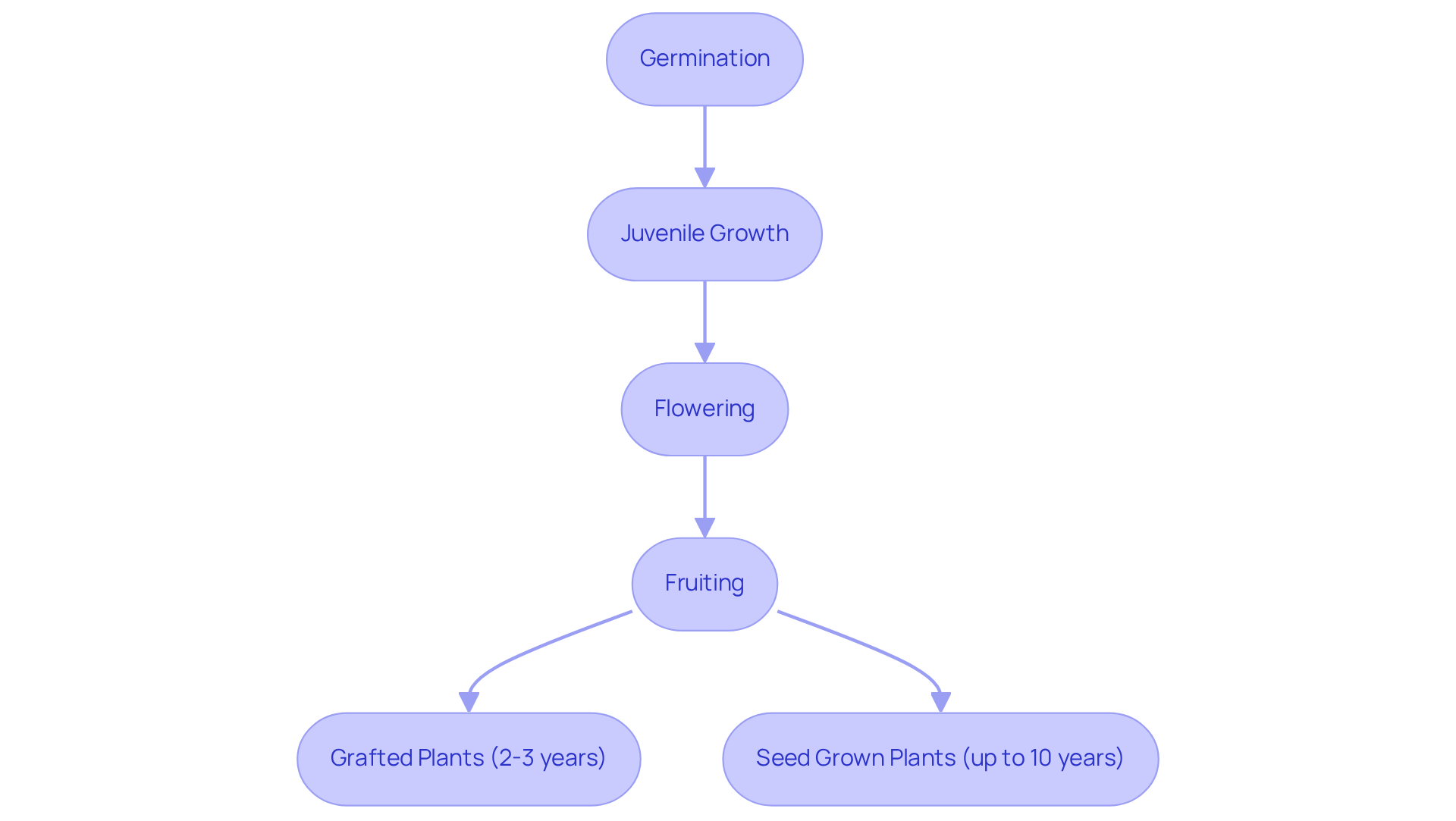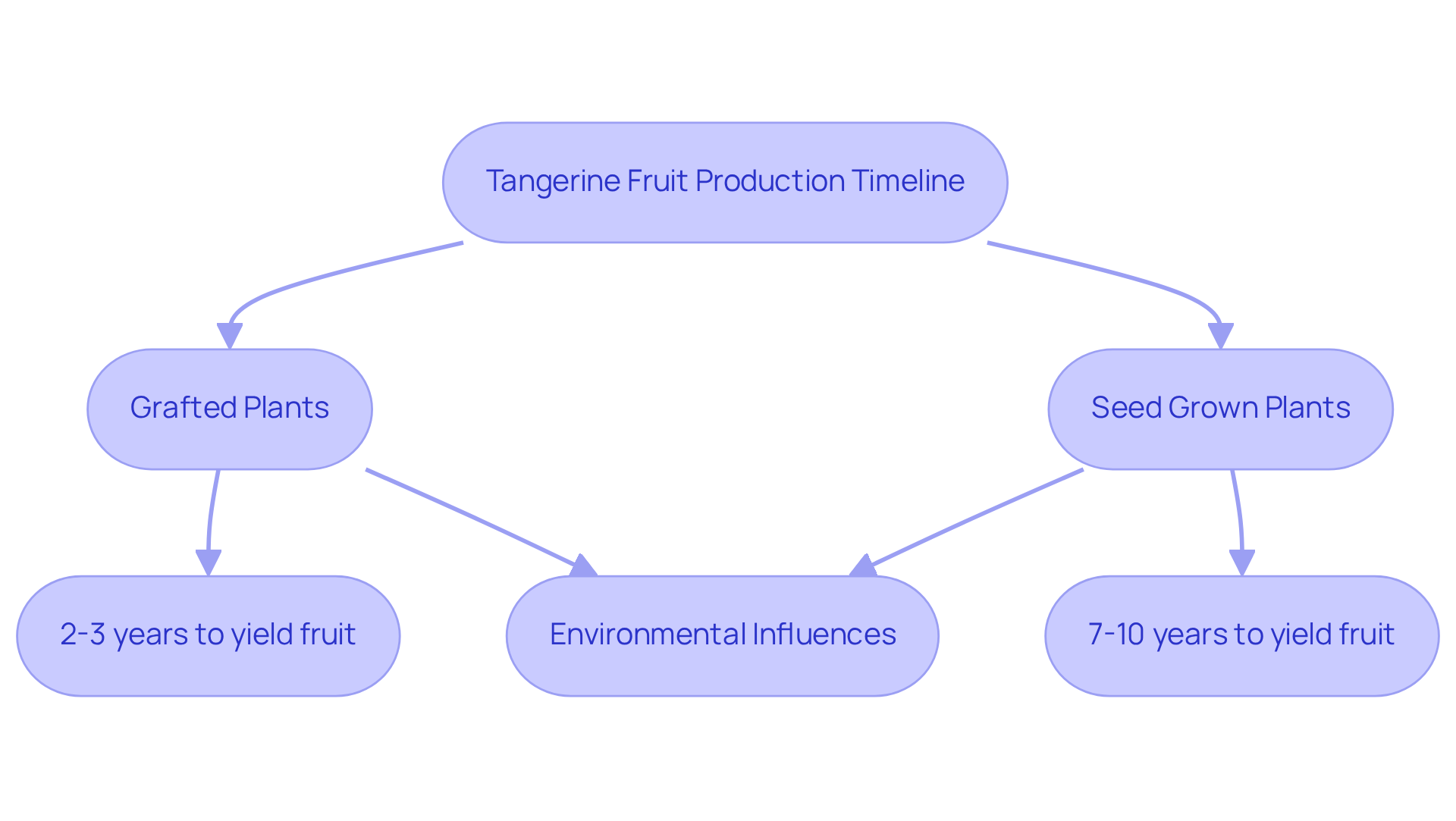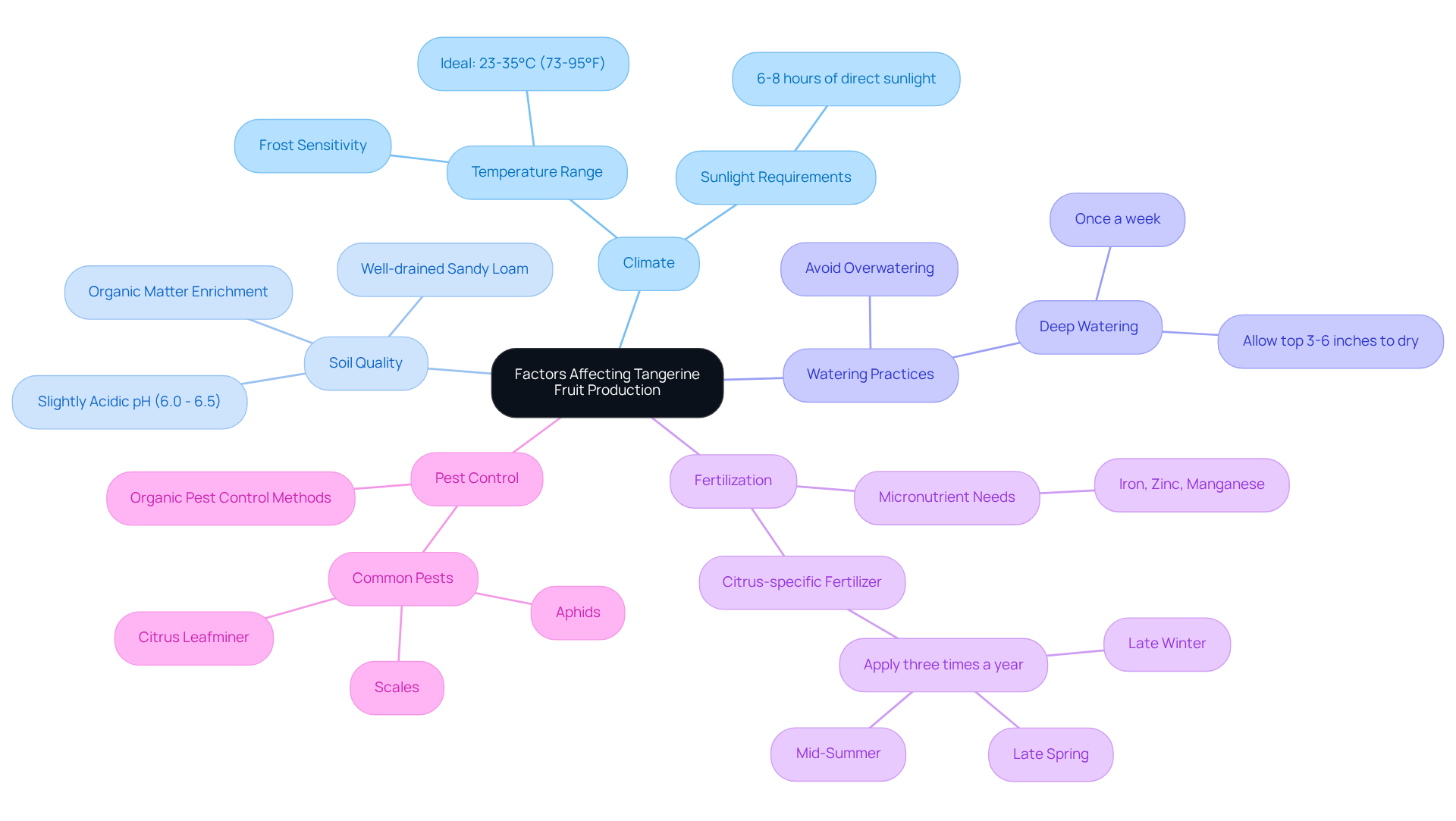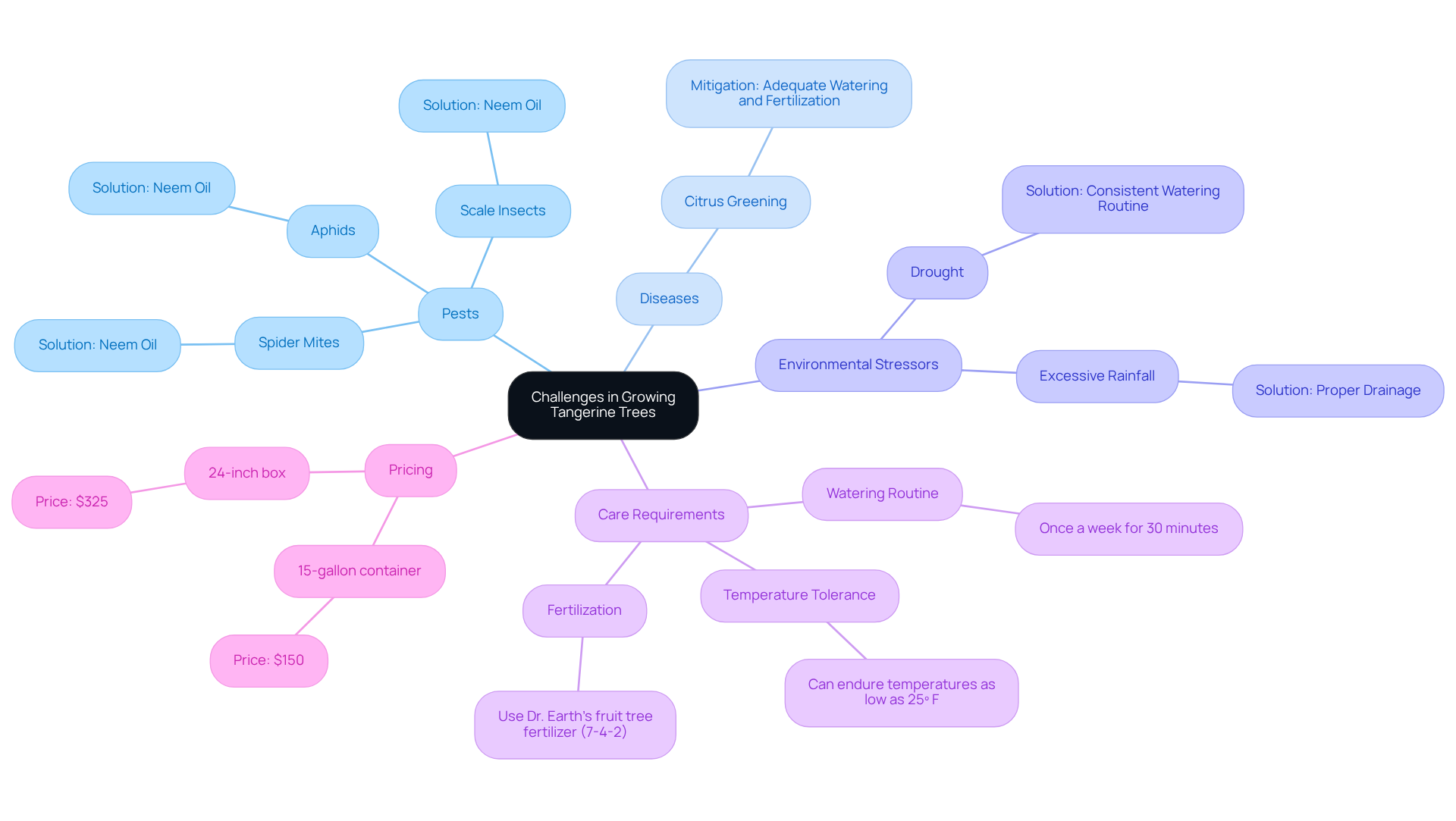Tangerine trees, characterized by their glossy leaves and fragrant blooms, represent a valuable addition to any garden. However, many aspiring gardeners often find themselves pondering a crucial question: how long does it take for these trees to bear fruit? The timeline for fruit production can vary significantly, influenced by factors such as propagation methods and environmental conditions. Thus, it is essential for growers to grasp the nuances of tangerine cultivation. As interest in homegrown citrus continues to rise, the challenge persists: can gardeners successfully navigate the complexities of growth cycles, care requirements, and potential obstacles to reap the sweet rewards of their labor?
Best Tangerine Tree for sale at Everglades Farm
👉🏻 Buy Tangerine Tree, shipped from Florida

Tangerine trees typically require 2 to 10 years to bear fruit, influenced by whether they are grafted or grown from seeds. Grafted trees tend to yield fruit sooner, usually within 2 to 3 years. This timeline is significantly affected by environmental factors, such as sunlight and soil quality. Proper care and cultivation techniques are crucial for successful fruit production, underscoring the importance of understanding these elements for optimal growth.
Define Tangerine Trees and Their Growth Cycle
Tangerine plants, scientifically known as Citrus reticulata, are evergreen members of the citrus family, distinguished by their glossy green leaves and fragrant white flowers. Their growth cycle comprises several key stages: germination, juvenile growth, flowering, and fruiting. Typically, a citrus plant may take between 1 to 5 years to start yielding produce, raising the question of how long for tangerine tree to produce fruit, which is influenced by whether it is cultivated from seed or grafted stock. Grafted plants often produce fruit sooner, usually within 2 to 3 years, while those grown from seeds raise the question of how long for tangerine tree to produce fruit, which can take significantly longer, sometimes extending up to 10 years. Understanding these growth phases is crucial for gardeners aiming to cultivate their own citrus plants successfully.
With the decline in citrus output in Florida, aspiring gardeners might find cultivating mandarins to be a rewarding alternative. Everglades Farm offers a Fast-Growing Plants collection that features citrus plants, providing home gardeners with quick-yield tropical greenery. Successful citrus cultivators emphasize the importance of proper care during the early developmental phase to ensure a healthy transition to fruiting. Utilizing Everglades Farm's professional-grade fertilizers can significantly enhance growth and yield, ensuring that
your citrus plants thrive and produce abundant crops.
Timeline for Tangerine Fruit Production
The schedule for citrus production varies based on several factors, including the propagation technique and ecological conditions. Grafted tangerine plants typically begin yielding fruit within 2 to 3 years after planting, while it can take 7 to 10 years to determine how long for tangerine tree to produce fruit if grown from seeds. Environmental elements such as sunlight, soil quality, and water availability significantly influence the speed at which a plant yields fruit. For instance, citrus plants require full sunlight for optimal growth and fruiting, thriving in well-drained, nutrient-rich soil.
According to Darren Sheriff, President of The Citrus Guy Horticultural Consulting Group, "Grafted trees not only produce yields sooner but also tend to be more resilient against environmental stresses." Understanding how long for tangerine tree to produce fruit and the associated conditions is crucial for gardeners aspiring to enjoy
homegrown citrus fruits.
Additionally, it is noteworthy that tangerine production has increased by 107% since 2000, highlighting the growing interest in cultivating these crops. However, challenges such as adverse weather events can affect production timelines, making it essential for gardeners to stay informed about best practices and environmental conditions.
Factors Affecting Tangerine Fruit Production
Tangerine plants require specific conditions to achieve optimal fruit production, leading to the inquiry of
how long for tangerine tree to produce fruit, as these conditions are influenced by climate, soil quality, and care practices. These plants flourish in subtropical to tropical climates, ideally within a temperature range of 23-35°C (73-95°F). The soil should be well-drained sandy loam, enriched with organic matter to promote healthy root development. Proper watering is essential; tangerine trees thrive on deep, infrequent watering to prevent root rot.
Fertilization plays a crucial role as well; applying a balanced, citrus-specific fertilizer three times a year—during late winter, late spring, and mid-summer—can significantly enhance growth and yield. Additionally, effective pest control is vital, as infestations from pests like aphids and scales can severely hinder crop production. By carefully managing these factors, gardeners can substantially increase their chances of understanding how long for tangerine tree to produce fruit.
Challenges in Growing Tangerine Trees and Solutions
Cultivating tangerine plants presents several challenges, including pest infestations, diseases, and environmental stressors. Common pests such as aphids, spider mites, and scale insects can damage leaves and fruit, leading to reduced yields. To combat these pests, regular monitoring and the application of organic pesticides, such as neem oil, every 10 days can be effective. Additionally, diseases like citrus greening pose a significant danger; thus, preserving plant health through adequate watering, fertilization, and pruning is essential for mitigation.
Tangerine plants flourish with a consistent watering routine of once a week for approximately 30 minutes, ensuring proper drainage to reduce stress from environmental factors such as drought or excessive rainfall. Furthermore, citrus plants can endure temperatures as low as 25º F, reaching heights of 15-20 feet and widths of 5-10 feet. By being proactive and knowledgeable, gardeners can successfully manage the challenges of cultivating citrus plants, ensuring a bountiful harvest.
Conclusion
Tangerine trees, characterized by their unique growth cycles and specific care requirements, provide a rewarding experience for gardeners eager to cultivate their own fruit. Understanding the timeline for a tangerine tree to produce fruit is crucial, as this journey varies significantly between trees grown from seed and those from grafted stock. Grafted trees typically yield fruit within 2 to 3 years, while seed-grown varieties may require up to a decade. This knowledge empowers gardeners to make informed decisions that align with their gardening aspirations.
Key factors influencing tangerine fruit production encompass:
- Environmental conditions
- Soil quality
- Cultivation practices
Optimal sunlight, well-drained soil, and proper watering are essential for ensuring healthy growth and fruiting. Additionally, effective pest management and disease prevention are vital in maintaining tree health and maximizing yield. By addressing these elements, gardeners can significantly enhance their chances of successful fruit production and enjoy the fruits of their labor.
Ultimately, cultivating tangerine trees transcends mere timelines for fruiting; it embodies a commitment to understanding and nurturing the plant's needs. Aspiring gardeners are encouraged to adopt best practices and remain vigilant against challenges, ensuring that their tangerine trees thrive. With patience and dedication, the journey to homegrown citrus can lead to a bountiful harvest, enriching both the garden and the table.
Grow Your Own Tangerines Today!
Start your gardening adventure with
Everglades Farm and enjoy fresh, homegrown citrus in just a few years.
Frequently Asked Questions
What are tangerine trees scientifically known as?
Tangerine trees are scientifically known as Citrus reticulata.
What are the key stages in the growth cycle of tangerine trees?
The key stages in the growth cycle of tangerine trees include germination, juvenile growth, flowering, and fruiting.
How long does it typically take for a tangerine tree to produce fruit?
A tangerine tree typically takes between 1 to 5 years to start yielding fruit, depending on whether it is grown from seed or grafted stock.
How does the method of cultivation affect the time it takes for a tangerine tree to produce fruit?
Grafted tangerine trees usually produce fruit sooner, within 2 to 3 years, while those grown from seeds can take significantly longer, sometimes up to 10 years.
Why might aspiring gardeners consider cultivating mandarins?
Aspiring gardeners might consider cultivating mandarins as a rewarding alternative due to the decline in citrus output in Florida.
What resources are available for home gardeners looking to grow citrus plants?
Everglades Farm offers a Fast-Growing Plants collection that features citrus plants, providing home gardeners with quick-yield tropical greenery.
What is important for successful citrus cultivation during the early developmental phase?
Proper care during the early developmental phase is crucial to ensure a healthy transition to fruiting for citrus plants.
How can fertilizers impact the growth and yield of citrus plants?
Utilizing professional-grade fertilizers, such as those from Everglades Farm, can significantly enhance growth and yield, ensuring that citrus plants thrive and produce abundant crops.







